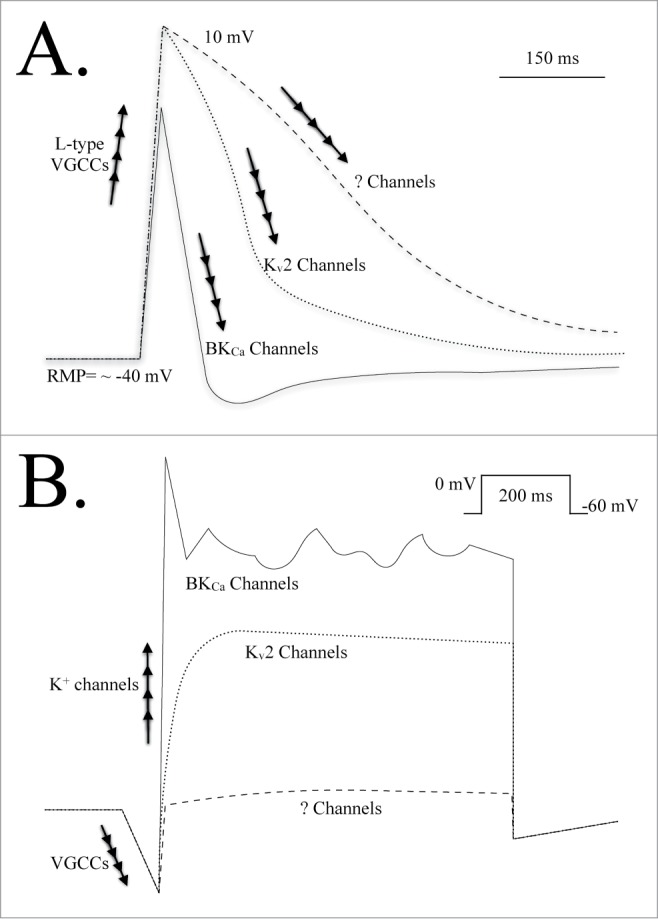Figure 3.

(A) A dissection of the various ion channels responsible for depolarization, repolarization and hyperpolarization of the cell membrane during an action potential event in a urethral smooth muscle cell.30,31 Under control conditions the BKCa channel is primarily responsible for reducing the duration of the action potential spike and hyperpolarizing the membrane potential; Kv2 channels do not contribute to this process.30 When BKCa channel current is suppressed, Kv2 channels are involved in repolarizing the membrane potential. When both BKCa and Kv2 channel currents are suppressed it is not yet known which conductances repolarize and stabilize the membrane potential. The conductances responsible for setting and maintaining/stabilizing the resting membrane potential have also not been reported. (B) An illustration of membrane currents evoked from a urethral smooth muscle cell in response to a step voltage clamp pulse. Depolarization of the cell membrane results in an L-type VGCC inward current. A rapidly activating, transient outward current is evident, carried by BKCa channels that requires VGCC activity and CICR from the SR. This is followed by a sustained and “noisy” outward current also carried by BKCa channels.30,31,40 The delayed-rectifier Kv2 current can be observed when BKCa channel current is inhibited. Inhibition of both BKCa and Kv2 channel currents leaves a small net outward current that has not been fully resolved. Abbreviations: L-type VGCCs, long-lasting voltage-gated Ca2+ channels; ? Channels, unknown channels; BKCa, large conductance, Ca2+-activated K+ channel; Kv2, voltage-gated K+ channels (Shab-related subfamily); mV, millivolt; ms, millisecond; RMP, resting membrane potential.
